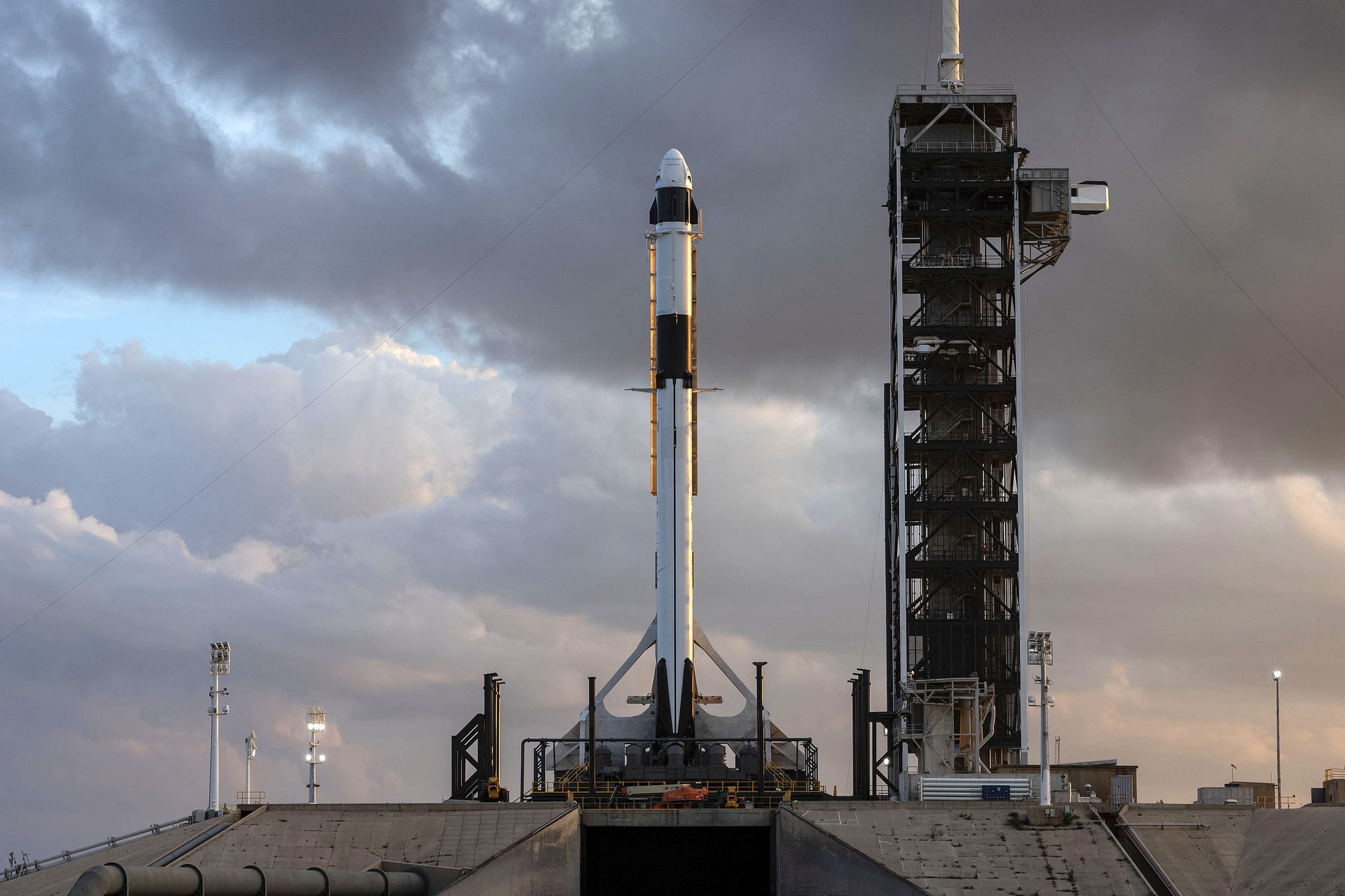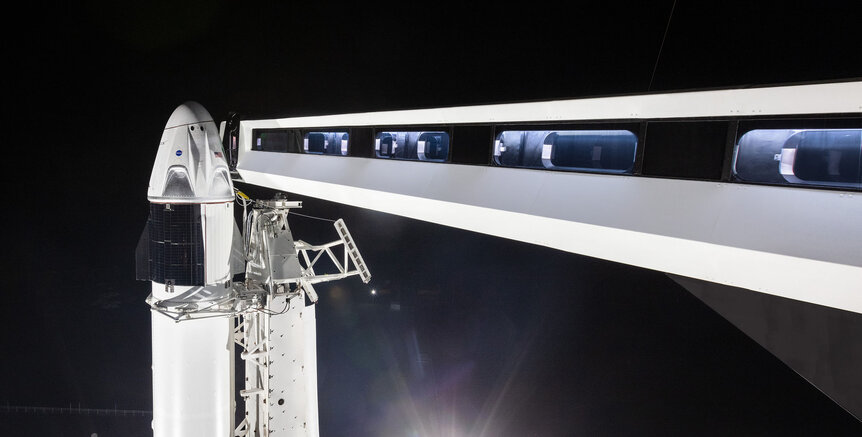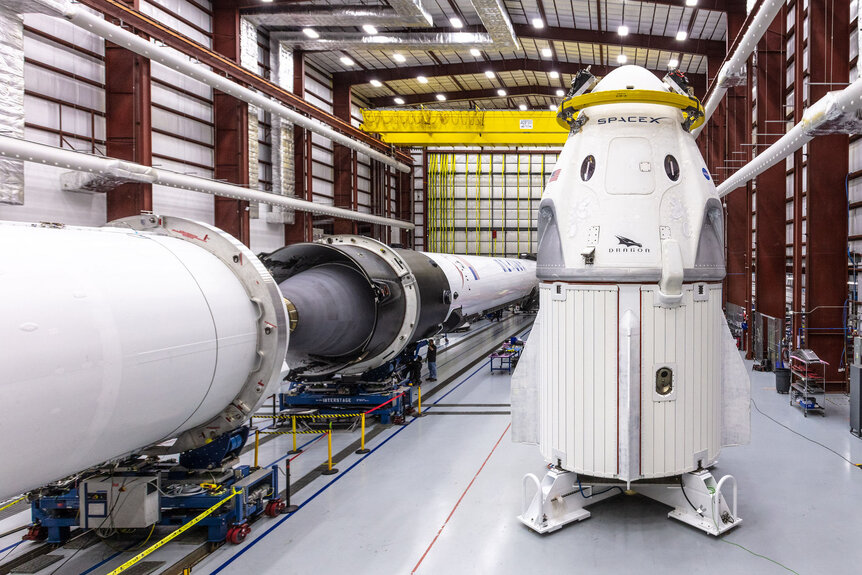Create a free profile to get unlimited access to exclusive videos, sweepstakes, and more!
SpaceX is set to launch its crew spacecraft for the first time

This Saturday, in the wee hours of the morning, SpaceX will attempt to launch the Crew Dragon vehicle for the first time. It's a spacecraft that’s intended to transport humans to and from space, taking off from historic launch pad 39A at Cape Canaveral in Florida. The test mission, called DM-1 (Demonstration Mission-1), will be uncrewed, meaning there will be no astronauts on board. The launch is scheduled to take place at 2:49 am EST; it’s an instantaneous launch window, which means if the Falcon 9 rocket doesn’t launch on time, they’ll try again a different day.
That’s a pretty dry description of the pretty amazing thing that’s going to happen; but what does it all mean?
When the Space Shuttle fleet was retired in 2011, the United States lost the ability to send our own astronauts to and from space. Instead, we have relied on the Russians these past few years to ferry our astronauts to and from the International Space Station (we haven’t been out of low Earth orbit since the Apollo program.) We’ve been paying roughly $75 million per seat for the privilege.
We weren’t supposed to go this long without the ability to fly our own astronauts. NASA’s been working on its own crew vehicle, Orion, which is being built as a vehicle to take humans deeper into the solar system. It’s relied on private contractors, in a program called Commercial Crew, for the ISS shuttling duties. SpaceX and Boeing have both been working these past few years on crewed spacecraft. There have been innumerable delays (and are likely more to come), but right now, we’re looking at a milestone in front of us.
This may seem like just the first step, but a lot of time, effort, and planning has gone into this launch. This will be the first time that the United States will fly a crew vehicle (or a spacecraft that’s equipped to fly humans) to the International Space Station since 2011. While the mission is uncrewed (and note, it’s uncrewed not unmanned because this isn’t the 1960s and let’s not exclude half the human race from space travel, ok? Uncrewed is the proper term, and this is a hill we’ll die on here at FANGRRLS), it’s still a huge accomplishment.“But why the extremely early launch time?” you might be asking. "After all, the mission is just a test. It’s not going anywhere."
Well, that’s not entirely true. The time is set by the position of the International Space Station. The plan is to have the Crew Dragon orbit the Earth for a day and then use autopilot to try and dock it with the International Space Station on Sunday. That’s scheduled to happen at 6 AM EST. Crew Dragon will stay there for the rest of the week, undocking on Friday, March 8 for a splashdown in the Atlantic Ocean. And, of course, the capsule is reusable (as is the rocket it’s being flown on), so SpaceX does have plans to retrieve it.
The capsule will have a dummy in a SpaceX spacesuit aboard, which will help NASA and SpaceX figure out how the suit handles the rigors of space travel. It’s not a Tesla roadster, but it’ll do. It will also be weighted to simulate carrying astronauts to better understand how it performs over the course of the mission.
Even if the mission ends in failure, it’s still important for what SpaceX and NASA can learn from it. But assuming it’s not, Boeing is scheduled to follow with its own uncrewed test of the Starliner spacecraft no earlier than April. The crewed tests, both labeled DM-2, are scheduled for later this year — SpaceX’s in July and Boeing’s in August. However, it’s important to note that these dates can and will change — after all, SpaceX’s DM-1 was originally scheduled for no earlier than December 2016.If you’d like to watch the mission (that’s a decent time for West Coast space nerds!), then NASA TV will air the launch live. There will then be a press conference, also on NASA TV, around 4 AM EST. Like any SpaceX launch, you will also be able to watch the livestream on YouTube or at SpaceX’s website.




























